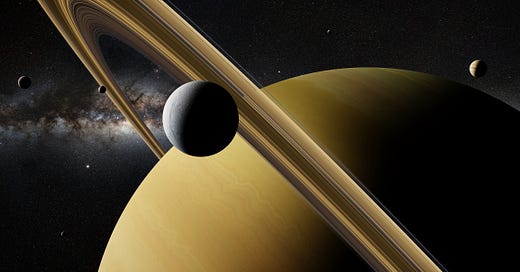When is a Moon a Moon?
recently 128 additional moons were discovered orbiting Saturn, raising its total to 274! As I describe in a new article in Quillette, maybe it is about time to reconsider what we call a moon.
(getty images: Credit dotted hippo)
The discovery of a plethora of new moons around Saturn caused me to think about whether it is time to redefine what we mean by a moon, as we did for the definition of ‘planet’ after it was discovered that Pluto wasn’t alone in the Kuiper belt. I outlined my perspective in a new article released today in Quillette. Here is how it begins. You can read the full article at the link provided below.
__________________________
When my daughter was in grade four, she was instructed to write about a planet of her choice. She chose Pluto. Alas, about fifteen years later, the International Astronomical Union (IAU) decided Pluto was no longer a full-fledged planet—partly because it’s just one of a number of similarly sized objects in an area of our solar system called the Kuiper Belt.
A newly drafted definition of the word “planet” limited the category to celestial bodies that (a) orbit around the Sun, (b) have sufficient mass so as to pull themselves into a nearly round shape, and (c) have “cleared the neighbourhood” around their orbits. Pluto failed the third criterion, and so became a mere “dwarf planet.”
The word “moon” may now be in for similar revisionism: It was announced this week that the International Astronomical Union (IAU) has recognised no fewer than 128 new official moons of Saturn, bringing that planet’s total to 274 known moons. At some point, surely, the word “moon” begins to lose its currency……
to read the full article go to: https://quillette.com/2025/03/17/too-many-moons/




